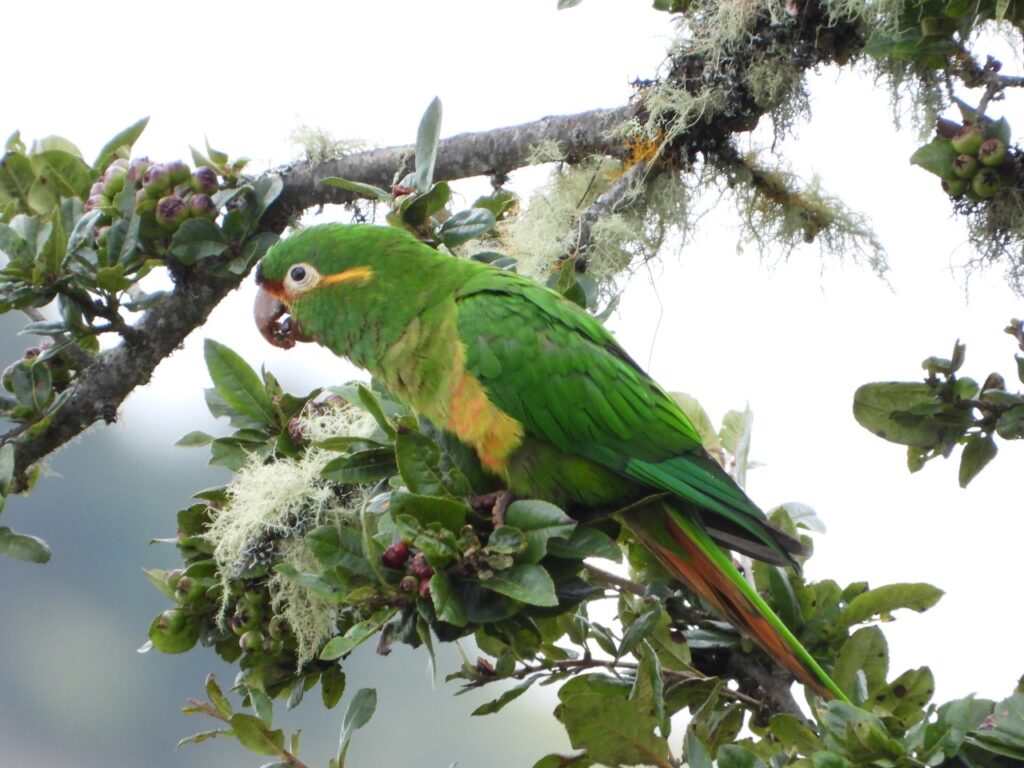Global Big Day 2023 Results


Welcome back to the Avistando Aves Andinas – Andean Birdwatching blog!
As we mentioned in our last post, on the 13th of May we took part in the Global Big Day along with birdwatchers and ornithologists around the world. So we’d like to share what we did, where we went, and most importantly the birds we observed.
For those who don’t know Global Big Day is an annual birdwatching event where birders around the world record their observations on ebird, contributing valuable data to avian research and conservation efforts. Anyone can take part from any location and this year 58,700 people uploaded 148,270 lists to ebird, recording sightings of 7636 bird species!
Colombia came in first place in bird species recorded by country with 1530 species observed around the country. We joined the 2831 people who uploaded lists from Colombia and organised a group of birders to explore the Camino Nacional between our hometown of Salento, Quindío and the Wax Palm Sanctuary in Tolima. We were a mixed group from experienced birdwatching guides to first-time birders, including two members of the tourism police who joined us for the day in support of this event.
We set out at 4 am, hoping to reach the wax palm sanctuary by sunrise. It’s an incredible forest of endangered Wax Palms that is also home to the Yellow-eared Parrot (Ognorhynchus icterotis) and is one of the best places in the world to see this species. Unfortunately, we were thwarted by tough conditions on the road (at one point having to push the jeep out of deep mud!) and missed the best time in the morning when the parrots come out into the open and can be easily observed socialising in the trees close to the viewpoint in the Sanctuary.


Even though we didn’t get the view of the parrots we were hoping for (in the morning), it was a blessing in disguise as we spotted some interesting species a little further down the road. We stopped for breakfast at a local farm from where we observed a family of Ringed Kingfishers (Megaceryle torquata), a pair of Mountain Caciques (Cacicus chrysonotus), and an amazing view of a Speckle-faced Parrot (Pionus tumultuosus) perched in a tree close by.
We gradually made our way back towards the Wax Palm Sanctuary. Birding along the track we came across a few very interesting mixed flocks. The first group we spotted included Black-eared Hemispingus (Sphenopsis melanotis), Supercilliaried Hemispingus (Thlypopsis superciliaris), Slaty Brushfinch (Atlapetes schistaceus), and Chestnut-backed Chat-Tyrant (Ochthoeca cinnamomeiventris), along with a Plushcap (Catamblyrhynchus diadema) which came out of the bushes a few times to give us all a good view.
Coming back to the Sanctuary around midday we were lucky enough to get a decent view of a Yellow-eared Parrot (Ognorhynchus icterotis) flock. The forests here are a complete contrast to the few Wax Palms left in the Cocora Valley. Protection for areas like these is vital for the survival of this endangered parrot species as well as many others.
We then stopped at The Carbonera to register some hummingbird species. The beautiful Long-tailed Sylph (Aglaiocercus kingii), Collared Inca (Coeligena torquata) and Tourmaline Sunangel (Heliangelus exortis) became a highlight for some in the group.
Our picnic spot was a viewpoint looking out for Indigo-winged Parrots (Hapalopsittaca fuertesi), although they didn’t make an appearance on that day we still had a great view of the mountains.

Perhaps the biggest surprise of the day came when we crossed back from Tolima into Quindío where the whole group managed to see the Chestnut-naped Antpitta (Grallaria nuchalis), and found a mixed flock with a number of rare high-mountain species, including Golden-crowned Tanager (Iridisornis rufivertex), Lacrimose Mountain Tanager (Anisognathus lacrymosus), Blue-backed Conebill (Conirostrum sitticolor), another Plushcap (Catamblyrhynchus diadema) and the highlight of the day Black-headed Hemispingus (Pseudospingus verticalis).


In the end, we were out birding from 4 am to 6 pm, between 1800m and 3400m, across two departments. We registered a total of 88 species, and you can take a look at our complete lists here.
Let us know how you spent your Big Day this year, and if you’re inspired make sure you join us for the October Big Day!
We want to give special thanks to the members of the tourism police who spent a long day with us for their first time birding, as well as the Fundación para la Conservación de Ecosistemas, and Icaro Birding for supporting our Global Big Day event.


